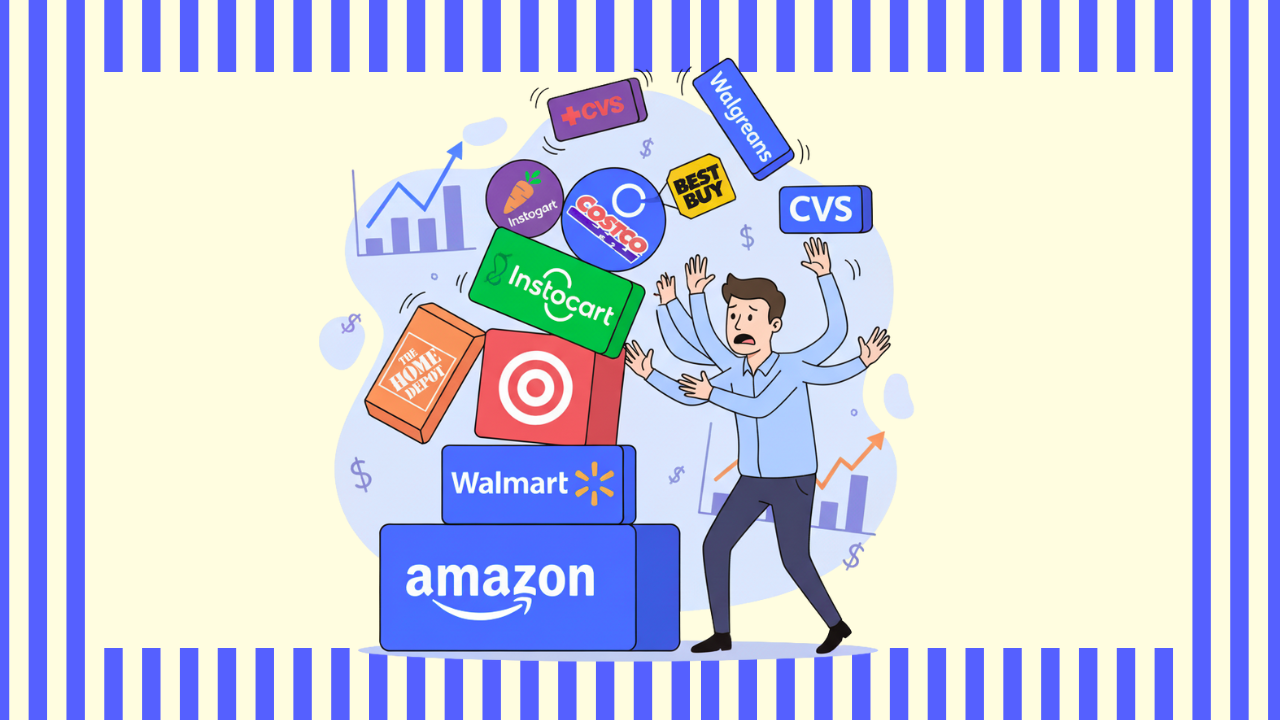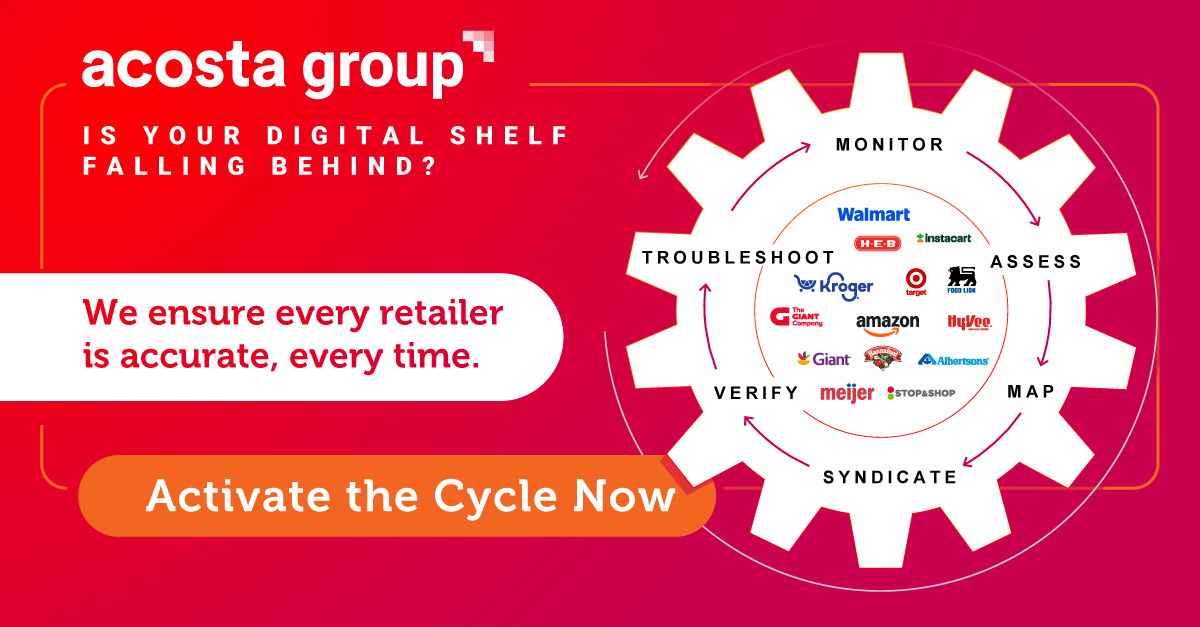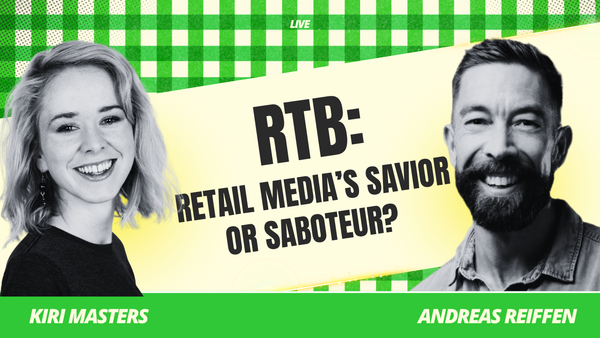Managing a Multi-Retailer RMN Stack: The Operational Reality
How can brands actually manage, optimize, and prove ROI across multiple retail media networks that each operate differently?

This is part three of a three-part series on effectively engaging retail media networks beyond the "big two." This series is sponsored by Connected Commerce at Acosta Group.

I had to laugh when Cody Tusberg mentioned his favorite "fun exercise" during our conversation this week. Picture this: A brand spends $7 million on a 30-second Super Bowl spot, driving massive awareness. But when Cody's team searches for that brand on a major retailer's site, a competitor's sponsored listing pops up first. "That should turn every marketing executive red in the face," he told me.
Here's the sad truth. Amazon launched sponsored search ads in 2012—thirteen years ago—and brands are still treating retail media like some optional add-on instead of integrating it with their expensive brand campaigns.
This week, I'm wrapping up a three-part series with Cody Tusberg, EVP of Connected Commerce and Retail Media Services at Acosta Group. In our first edition, "Brands Are From Mars, Retailers Are From Venus," we explored the internal politics of retailers and what brands need to understand. Last week in "Growth Beyond Amazon," we discussed how to evaluate and allocate across retail media's expanding universe.
Today, we're tackling the nuts and bolts: How do you actually manage, optimize, and prove ROI across multiple retail media networks that each operate differently?
The Holy Grail vs. The 80/20 Reality
I started our conversation with the question that keeps coming up: Given all the fragmentation and walled gardens in retail media, is connecting a brand's ad investment back to total sales just a pipe dream?
Cody's answer was refreshingly honest. "Perfect attribution is what we want, but the goal should really be better decision making."
For best-in-class brands with big budgets, true incrementality is achievable. They're layering in multiple data sources—retailer reporting, syndicated data, third-party incrementality studies—and building economic models that get as close as possible to the real impact. But for most brands, the 80/20 approach is what actually works: focusing on directional insights rather than perfect measurement.
The key is understanding what you're actually comparing. When retailers report a brand's ROAS, Cody emphasized, you need to understand how that number gets calculated, what the attribution window is, and remember that not every dollar that comes back in a media campaign is necessarily incremental.
Instead of chasing perfect attribution, smart brands are asking better questions: What's my cost of acquisition? How does lifetime value play out? If I drive traffic to a store, even without direct attribution to sales, how does that conversation with merchants change?
Beyond ROAS: The Metrics That Actually Matter
This brings us to one of retail media's biggest traps: the obsession with return on ad spend. ROAS might make finance teams happy, it won't help you sell more. And as Cody put it, 'Ultimately at the end of the day, we're all here to sell stuff.'
When managing multiple retailers, brands need to resist the temptation to treat all ROAS numbers as equivalent. Instead, focus on baseline comparisons: What's the saturation in sponsored advertising? Is my cost per click significantly higher or lower? What's the yield on a dollar at this retailer versus that retailer?
Sometimes the most important metrics aren't directly sales-related. Cody mentioned how driving traffic to stores—even without perfect attribution—becomes a powerful conversation starter with merchants. Your sales team can walk into JBP meetings and say, "My investment of X added X amount of traffic into your stores."
The Orchestration Challenge
The Super Bowl example Cody shared highlights a bigger issue: most brands aren't orchestrating their investments within a retailer's ecosystem. Trade spend, shopper marketing, and retail media often operate in isolation, missing huge opportunities for amplification.
"You don't want a large shopper activation running with no retail media support," Cody explained. The solution sounds obvious but requires genuine coordination: make sure your calendars are lined up.
If you're investing significant money above the line—whether that's a Super Bowl spot or any major brand campaign—your below-the-line investments need to work as hard as possible during that same window.
The Resource Reality Check
Here's where most brands hit the wall: operational complexity scales brutally. Most brands don't have the headcount to manage 10 different retail media networks... plus do trade and shopper marketing well.
The solution isn't hiring 10 specialists. Instead, Cody recommends a hub-and-spoke model: centralize the strategy and measurement, then use partners for automation to execute at scale. "You need one orchestrator and one of the right external partners to support that."
When I asked Cody about team structure looking ahead, his answer crystallized everything we'd discussed: "The lines between trade, shopper, and retail media are going to continue to blur more."
Brands need to think about integrating their commerce teams to own the full retailer relationship—not just media, not just trade in isolation. Some brands will build this capability internally; others will partner with organizations that understand the full retail ecosystem.
But one thing is certain: "The days of siloed teams are absolutely numbered. We have to be connected."
The Bottom Line
I recalled a conversation with a brand that's mastered retailer accountability. They take their performance data to retail partners, show a blind stack-rank of where each retailer sits versus the competition, and ask point-blank: 'What else should we be doing? Are there aspects of your media capability that we're not tapping into?'
Power move? Maybe.
But managing a multi-retailer RMN stack isn't getting easier. And the brands that win aren't necessarily those with the fanciest attribution models or the fattest budgets. They'll be the ones that understand retailer politics, orchestrate investments like a conductor, and aren't afraid to hold partners accountable.
As Cody put it, sometimes you need to 'hold your dollars hostage a little bit' to current performance, then tie that to future investment. It's not about being difficult—it's about being clear on what wins look like and making sure everyone's actually trying to win."
This series was sponsored by Connected Commerce at Acosta Group. Learn more about their capabilities at Acosta.Group.





